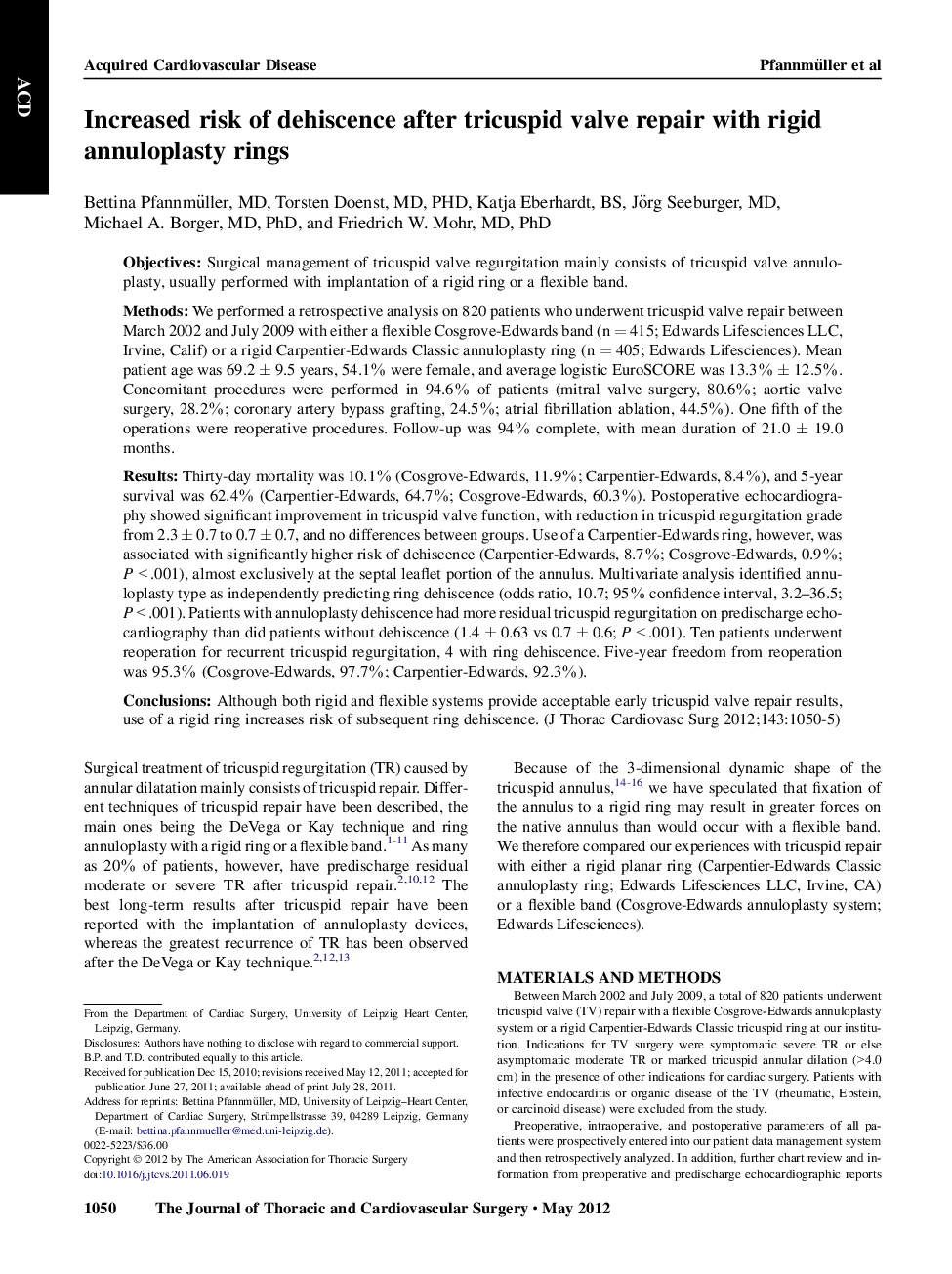| کد مقاله | کد نشریه | سال انتشار | مقاله انگلیسی | نسخه تمام متن |
|---|---|---|---|---|
| 2982148 | 1578636 | 2012 | 6 صفحه PDF | دانلود رایگان |

ObjectivesSurgical management of tricuspid valve regurgitation mainly consists of tricuspid valve annuloplasty, usually performed with implantation of a rigid ring or a flexible band.MethodsWe performed a retrospective analysis on 820 patients who underwent tricuspid valve repair between March 2002 and July 2009 with either a flexible Cosgrove-Edwards band (n = 415; Edwards Lifesciences LLC, Irvine, Calif) or a rigid Carpentier-Edwards Classic annuloplasty ring (n = 405; Edwards Lifesciences). Mean patient age was 69.2 ± 9.5 years, 54.1% were female, and average logistic EuroSCORE was 13.3% ± 12.5%. Concomitant procedures were performed in 94.6% of patients (mitral valve surgery, 80.6%; aortic valve surgery, 28.2%; coronary artery bypass grafting, 24.5%; atrial fibrillation ablation, 44.5%). One fifth of the operations were reoperative procedures. Follow-up was 94% complete, with mean duration of 21.0 ± 19.0 months.ResultsThirty-day mortality was 10.1% (Cosgrove-Edwards, 11.9%; Carpentier-Edwards, 8.4%), and 5-year survival was 62.4% (Carpentier-Edwards, 64.7%; Cosgrove-Edwards, 60.3%). Postoperative echocardiography showed significant improvement in tricuspid valve function, with reduction in tricuspid regurgitation grade from 2.3 ± 0.7 to 0.7 ± 0.7, and no differences between groups. Use of a Carpentier-Edwards ring, however, was associated with significantly higher risk of dehiscence (Carpentier-Edwards, 8.7%; Cosgrove-Edwards, 0.9%; P < .001), almost exclusively at the septal leaflet portion of the annulus. Multivariate analysis identified annuloplasty type as independently predicting ring dehiscence (odds ratio, 10.7; 95% confidence interval, 3.2–36.5; P < .001). Patients with annuloplasty dehiscence had more residual tricuspid regurgitation on predischarge echocardiography than did patients without dehiscence (1.4 ± 0.63 vs 0.7 ± 0.6; P < .001). Ten patients underwent reoperation for recurrent tricuspid regurgitation, 4 with ring dehiscence. Five-year freedom from reoperation was 95.3% (Cosgrove-Edwards, 97.7%; Carpentier-Edwards, 92.3%).ConclusionsAlthough both rigid and flexible systems provide acceptable early tricuspid valve repair results, use of a rigid ring increases risk of subsequent ring dehiscence.
Journal: The Journal of Thoracic and Cardiovascular Surgery - Volume 143, Issue 5, May 2012, Pages 1050–1055